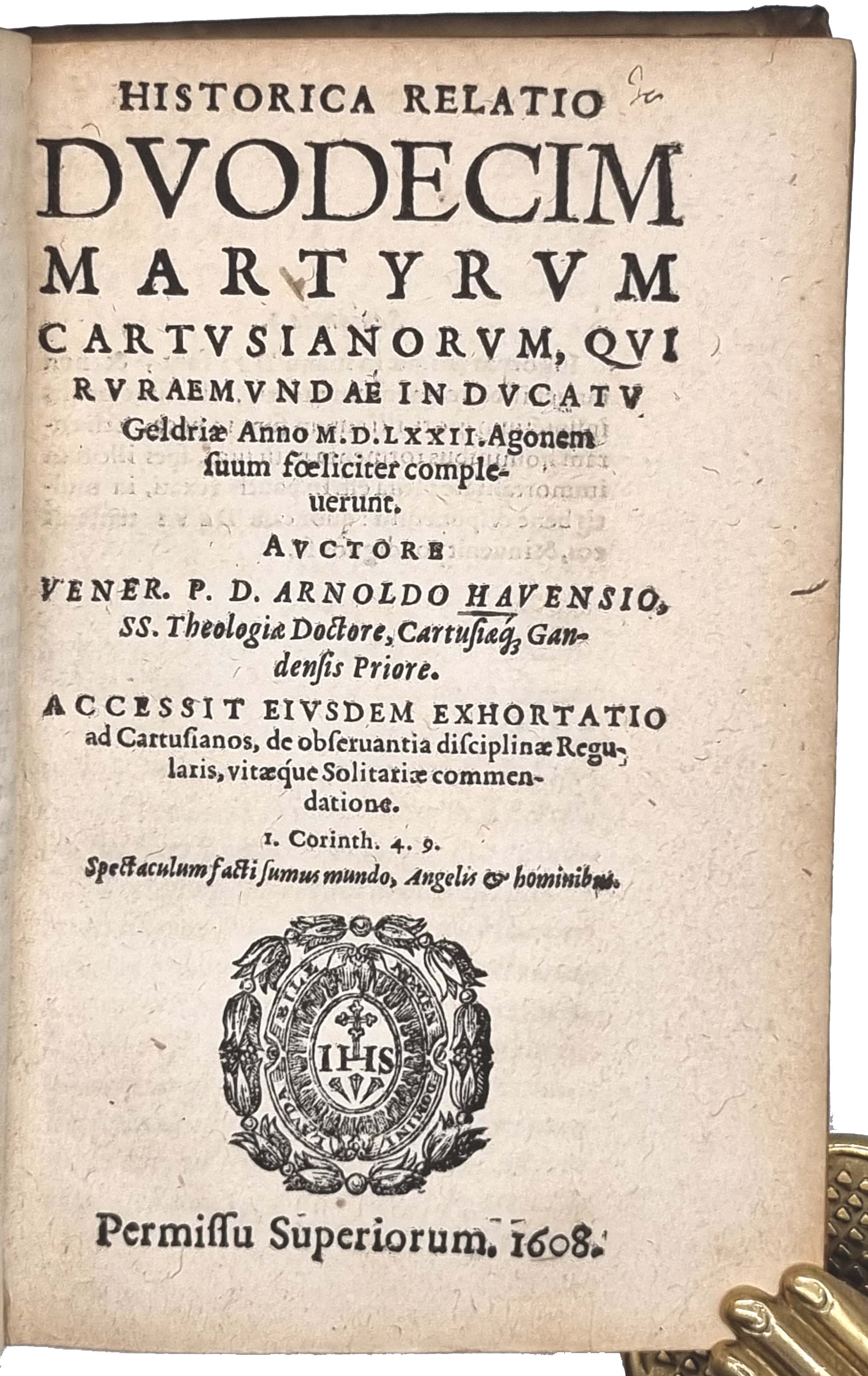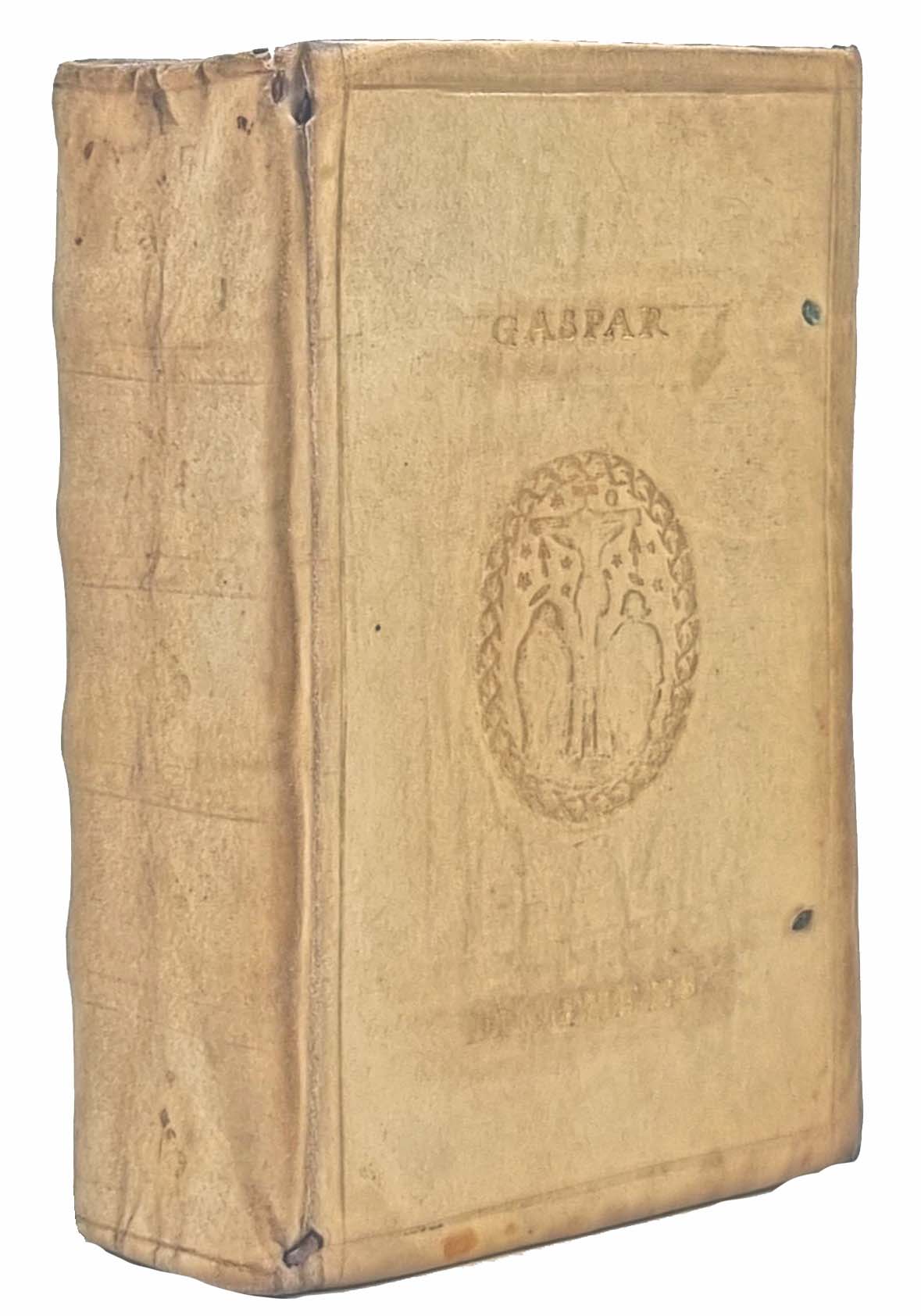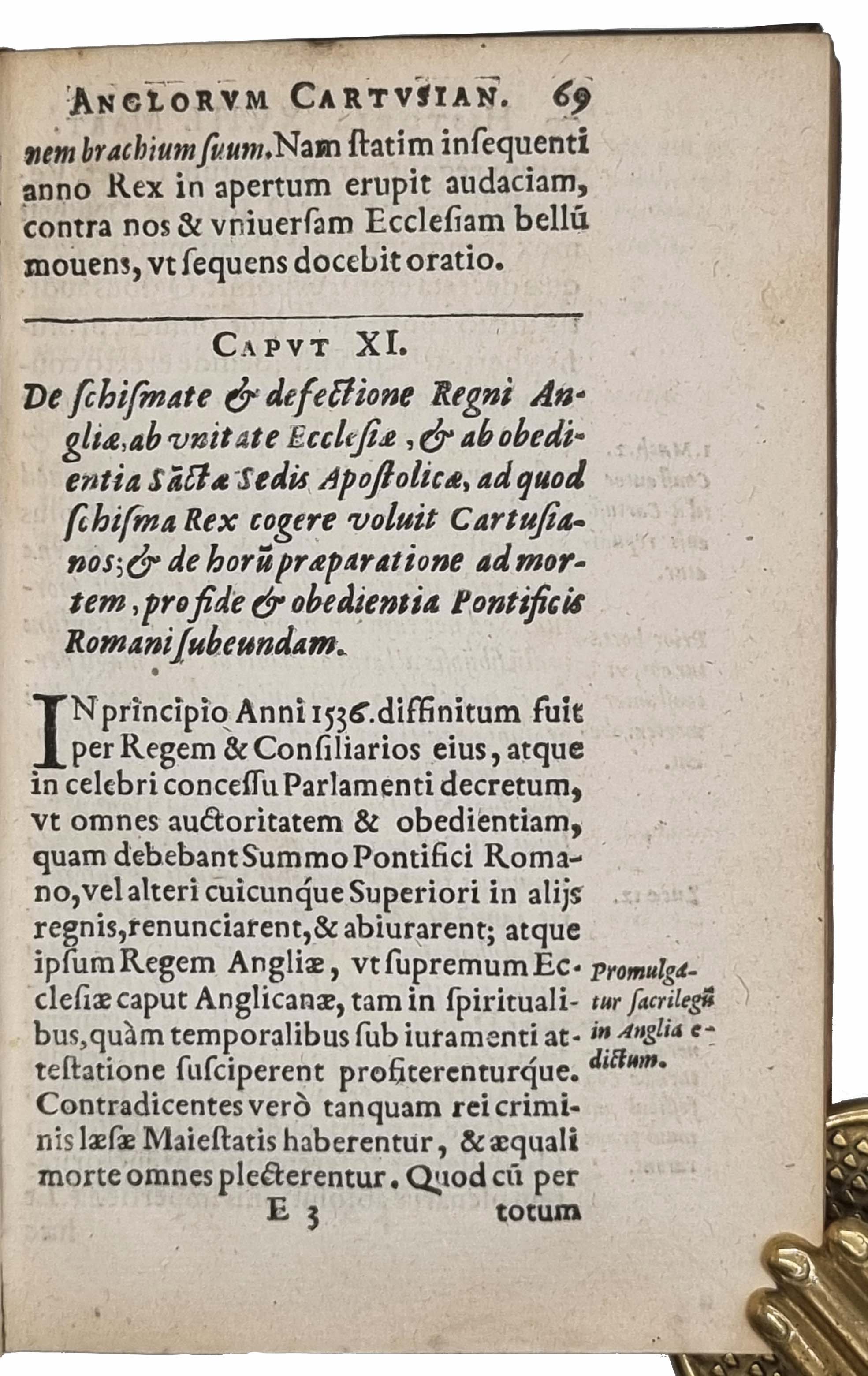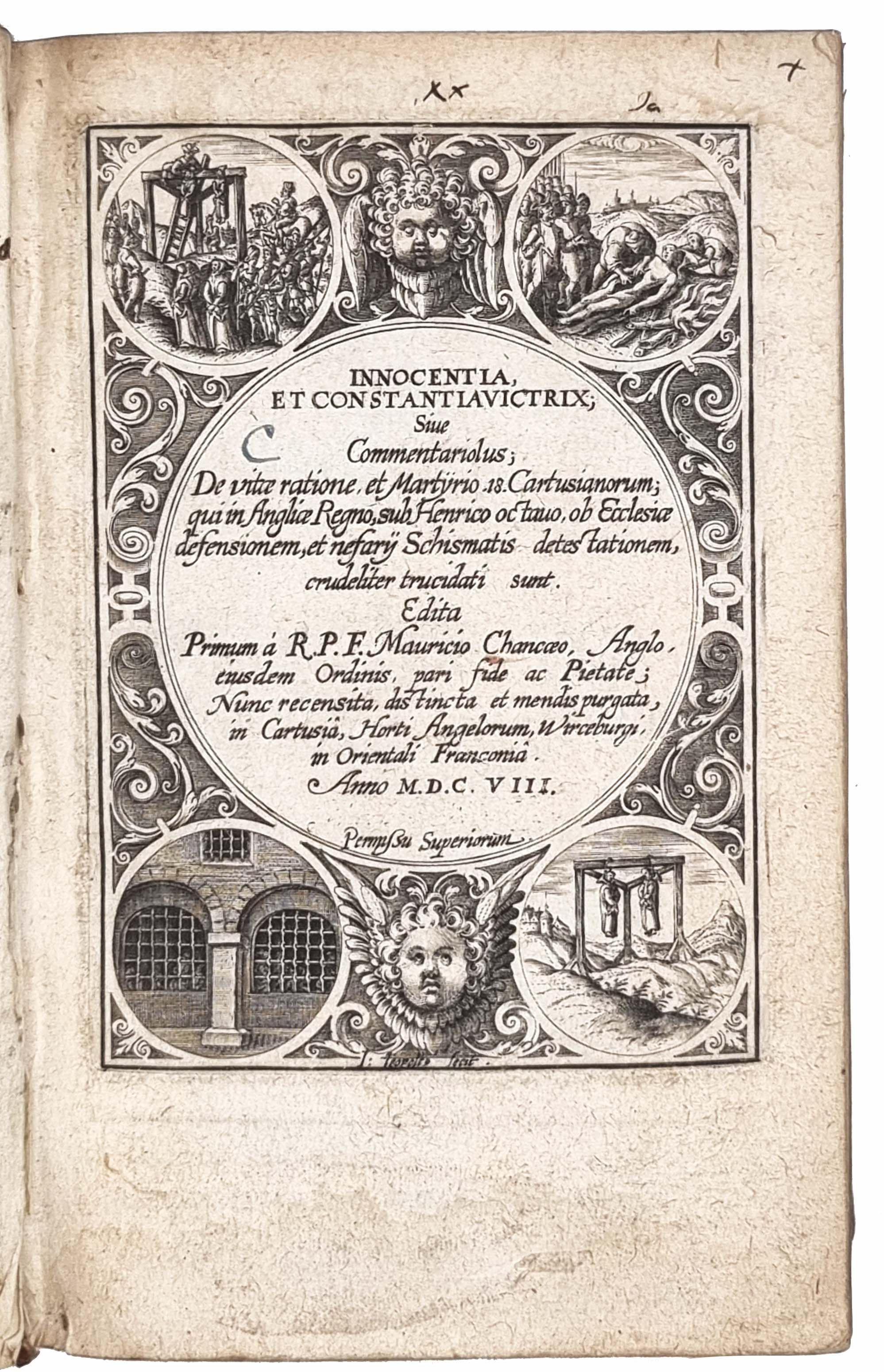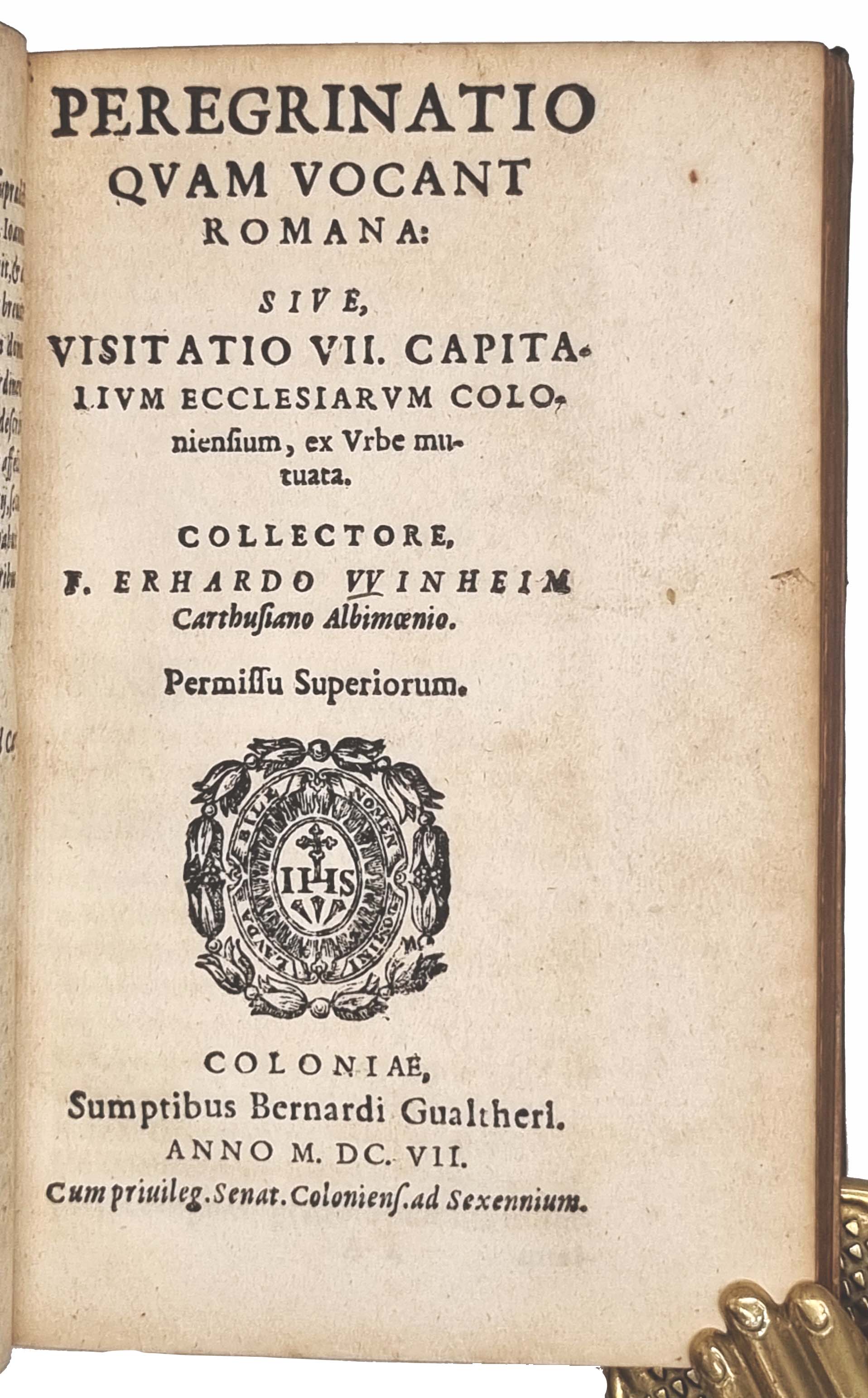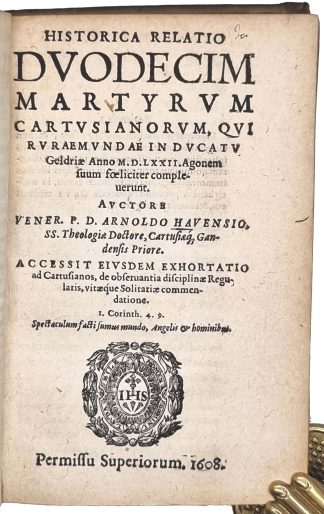CHAUNCY, Maurice, (with) HAVENS, Arnold, (and) WINHEIM, Erhard
COUNTER-REFORMATION SAMMELBAND
(1) Innocentia et Constantia victrix. (with) (2) Historica relatio duodecim martyrum cartusianorum. Peregrinatio quam vocant romana. (and) (3) Sacrarium Agrippinae.
(1) [Würzburg?], [s.n.], 1608, (2) [s.l.], [s.n.], 1608, (3) Cologne, sumpt. Bernhardi Gualthieri, 1607£1,750.00
FIRST EDITIONS. 8vo. 4 works in 1, each with separate t-p, pagination and register, pp. (xxii) 111 (i), (xvi) 77 (iii), 143 (i), (xxxii) 520, A1 of first work cancelled as often. Roman letter, with Italic. Engraved t-p with biblical scenes, engraved arms of Archduke Maximilian to preliminaries and full-page engraved plate of martyrdom to first; engraved t-p with martyrs, allegorical figures and view of Cologne to fourth; woodcut device of Society of Jesus to t-ps of second and third; decorated initials, head- and tailpieces. First t-p a bit dusty, very faint waterstaining to a few lower margins, slight age browning in places, marginal repair to t-p and another of fourth. Very good copies in contemporary vellum over boards, lacking ties, yapp edges, single gilt ruled, gilt oval centrepiece with Crucifixion, ‘Gaspar Dinghens’ and ‘Anno 1611’ gilt to upper and lower cover respectively, gilt large fleurons to spine. Labels of Milltown Park Library and William O’Brien to front pastedown, C19 bibliographical notes, early casemarks, stamp of Milltown Park Library and contemporary annotation to feps, couple of shelfmarks to blank margin of first t-p.
A C17 sammelband of the first editions of Counter-Reformation works on Carthusian martyrology, pilgrimage and ecclesiastical antiquities. Maurice Chauncy (1509-81) was an English Carthusian. Having been spared martyrdom, unlike other monks from the London Charterhouse, by accepting the Oath of Supremacy after the Anglican Schism, he fled to a monastery in Bruges. His guilt for this weakness urged him to write works, including ‘Innocentia’, on the lives, customs and holy deaths of the Carthusian martyrs he knew at the time of Henry VIII. Arnold Havens (1540-1610) was Prior of the Charterhouse at Ghent. Whilst remembering those killed in London during the dissolution of the monasteries under Henry VIII, his work provided an account of the martyrdom of twelve Carthusians from Roermond, murdered near the altar by Protestant soldiers during the Dutch revolt of 1572, as illustrated in the gory engraving. Havens called the soldiers ‘haeretici’ who carried out this ‘sacrilega barbaries’ out of ‘avarice’ for the treasures of the Church. Little is known of Erhard Winheim (fl. early C17), whose works blend learned antiquarianism, local history and Counter-Reformation devotion. ‘Peregrinatio’ transferred onto the map of the city of Cologne the route of the Seven Churches of Rome to be visited at pilgrimage—e.g. the Cathedral, St Severin’s Church and St Gereon—listing orations to be recited in front of specific altars. ‘Sacrarium Agrippinae’ (referring to the city’s Latin name, Colonia Agrippinae) was devoted to the saints and churches of Cologne, with accounts of their history.
Gaspar Dinghens (1593?-1685) from Cologne studied theology at Louvain and was also versed in Hebrew. He joined the Dominican order in 1613 and entered a monastery in Antwerp; he was also sent on missions to Belgium and France.
I) USTC 2092928; Allison & Rogers, English Counter-Reformation, I, 238. Not in BM STC Ger. C17 or Graesse.II) USTC 2079906; Allison & Rogers, English Counter-Reformation, I, 238; Graesse III, 220: ‘often found with I)…the figure of Jean Leopold is often missing.’ Not in BM STC Ger. C17.III) Harvard, Yale and BYU copies recorded in the US.Not in BM STC Ger. C17 or Graesse.IV) Yale and Harvard copies recorded in the US.USTC 2133032; BL STC Ger. C17, W1068. Not in Graesse.In stock


